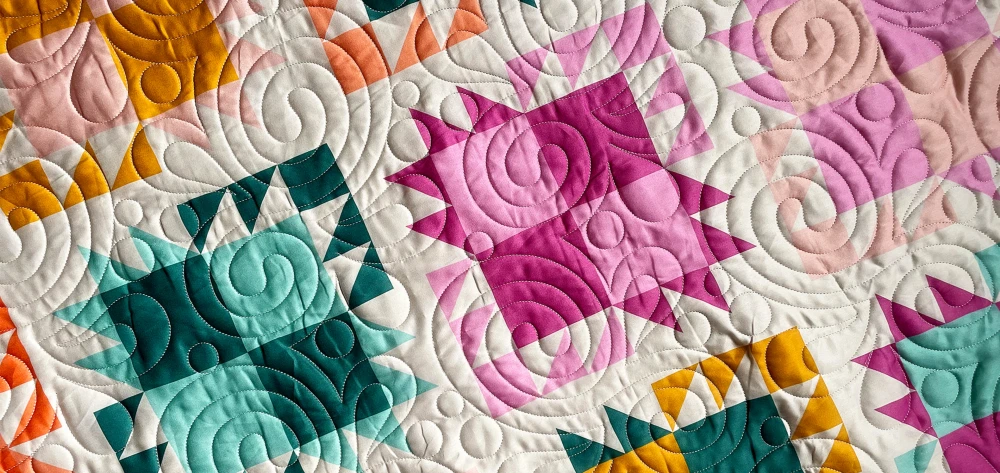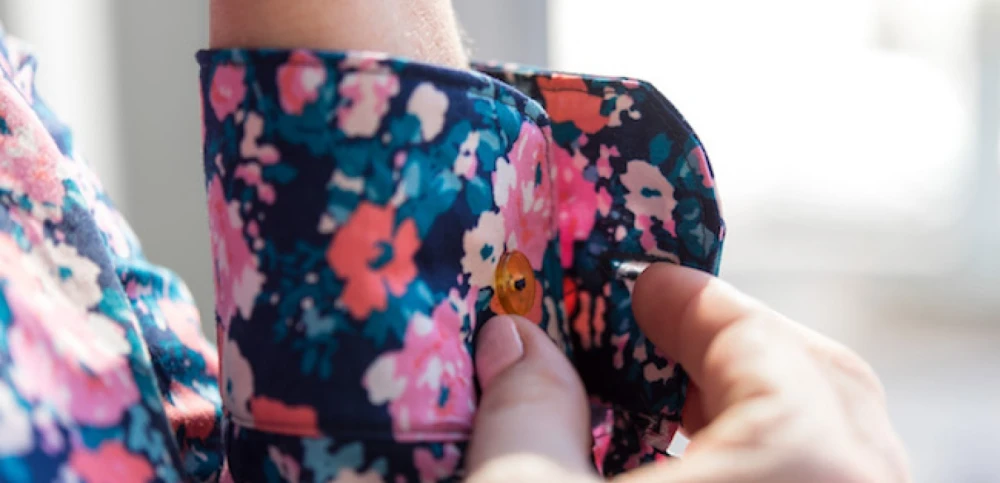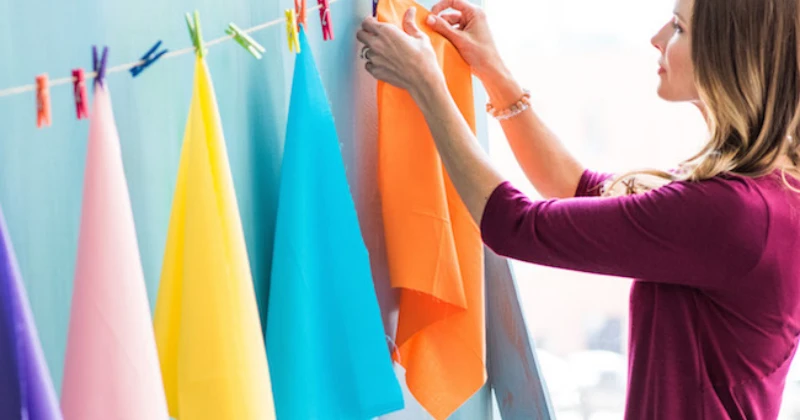Yes, you can use quilt fabric for clothes. Quilting cotton for clothing gives you a sturdy, easy-to-sew option that works well for beginners. You’ll find thousands of prints, colors, and patterns—everything from stripes and florals to polka dots and solids.
With the right tips, you can sew stylish, comfortable clothes and manage things like wrinkling or drape. You need a little know-how and the right fabric to make your project shine.
Key Takeaways
Quilting cotton is a sturdy, easy-to-sew fabric that holds its shape well and comes in many colors and prints, making it great for beginners.
Choose structured patterns like A-line skirts, cap sleeve shirts, and pajama bottoms to match quilting cotton’s firmness and avoid tight or flowy designs.
Always prewash and press your fabric before cutting to prevent shrinking and wrinkles, and use proper needles and thread for smooth sewing.
Finish seams with strong methods like flat felled or French seams to prevent fraying and make your clothes last longer.
Mix solids and prints thoughtfully to create stylish outfits, and don’t hesitate to share your projects online to connect with other sewists.
Quilting Cotton Overview

Fabric Qualities
If you’re new to sewing, you’ll love how easy quilting cotton is to handle. This fabric has a tight plain weave and a medium weight, which means it holds its shape and feels smooth to the touch. You’ll notice that quilting cotton for clothing is sturdier than many other fabrics you might find at the store.
It doesn’t slip around when you cut or sew, so you get crisp edges and neat seams. The high thread count helps the fabric resist fraying and keeps colors looking bright wash after wash.
Tip: Fanda Fabrics offers premium quilting cottons that stand up to repeated washing and daily wear. You can trust their Quilting Collection for projects that need durability and lasting color.
Compared to linen, voile, or flannel, quilting cotton is less likely to shrink or lose its shape. Linen feels airy but can stretch out. Voile is sheer and slippery, which makes it tricky for beginners. Flannel is cozy but can be messy to cut. Quilting cotton gives you a reliable, easy-to-manage option for clothing and crafts.
Types and Prints
You have endless choices when it comes to types and prints. Fanda Fabrics carries everything from solid color quilt fabric to bold printed cotton fabric. You’ll find classic florals, playful polka dots, stripes, and geometric designs. Solid cotton fabric works great for basics or as a background for statement prints.
Popular types include batik, chambray, muslin, organic cotton, and sateen.
Prints range from paisley, animal, and abstract to gingham, plaid, and holiday themes.
Designer lines and novelty prints let you create one-of-a-kind garments.
If you want to mix and match, try combining solids with prints from Fanda Fabrics. Their collections make it easy to design clothing that reflects your style. Whether you’re sewing a crisp skirt, a structured top, or comfy pajamas, you’ll find the right fabric for your project.
Note: Fanda Fabrics updates their patterns often, so you can always discover something new for your next sewing adventure.
Quilting Cotton for Clothing

Benefits
When you choose quilting cotton for clothing, you get a fabric that feels soft and gentle against your skin. You can wear it all day without feeling uncomfortable. This fabric is made from 100% natural cotton, so it’s eco-friendly and biodegradable. You help the planet while making something beautiful.
Here are some reasons why sewists love quilting cotton for clothing:
It’s exceptionally breathable, letting air flow freely and keeping you cool in warm weather.
The fabric absorbs moisture and dries quickly, so your clothes stay fresh.
Quilting cotton is hypoallergenic, which means it’s great if you have sensitive skin or allergies.
You’ll find it easy to care for—just toss it in the washing machine and iron if needed.
The fabric holds dye well, so colors stay bright and patterns look crisp after many washes.
It’s durable and long-lasting, perfect for clothes you want to wear often.
You can pick from a huge variety of prints and colors, especially with Fanda Fabrics’ collections. You’ll never run out of creative options.
Tip: If you want a classic look or something bold, you’ll find the right style with solids or printed cotton fabric from Fanda Fabrics.
Considerations
Quilting cotton for clothing works best for structured garments. You might notice that it feels stiffer than other fabrics. This means it’s perfect for A-line skirts, boxy tops, or pajama bottoms. If you want to sew something with gathers or a flowy style, you may need to look for a softer cotton or add a lining.
Here are some ways to manage the fabric’s limited drape and tendency to wrinkle:
Pick patterns that suit the fabric’s body, like straight dresses or relaxed-fit shirts.
Avoid tight sleeves to keep your clothes comfortable.
Add a silky lining for extra softness and easier movement.
Always pre-wash your fabric to soften it and prevent shrinkage.
Choose larger prints to complement the structure of quilting cotton.
You can feel confident sewing with quilting cotton for clothing when you match the right pattern and use these simple tricks. Try washing a small piece first to see how it feels. You’ll get the best results when you work with the fabric’s natural qualities.
Pattern Selection
Best Garment Types
Choosing the right pattern makes all the difference when you sew with quilting cotton. This fabric shines in projects that need a bit of structure and hold their shape. You’ll find that certain garment styles work especially well:
Cap Sleeve Shirts – Patterns like The Assembly Line Cap Sleeve Shirt use quilting cotton’s structure for a crisp look. The folded sleeve and standing collar feel comfortable and look polished.
Full Circle Skirts – Quilting cotton holds an A-line flare beautifully. Try patterns like Sew Over It Full Circle Skirt for a skirt that keeps its shape and hangs nicely.
Pyjama Bottoms – Breathable cotton makes loungewear like Tilly and the Buttons Jaimie Pyjama Bottoms soft and easy to wear.
Bias-Cut Tanks – Patterns such as Jennifer Lauren Handmade Hunter Tank use a bias cut to add flow and reduce stiffness.
Pinafores – The Stitch Witch Patterns Alcott Pinafore works well with mid-weight cottons, offering options for midi or maxi skirts.
You can also explore boxy tops, tunics, fit-and-flare dresses, and button-up shirts without darts. Patterns from Cocowawa Crafts, Anna Allen Patterns, Christine Haynes, By Hand London, and Cashmerette often get great reviews for quilting cotton.
Tip: Structured designs let you show off bold prints and colors from Fanda Fabrics’ collections.
Patterns to Avoid
Quilting cotton doesn’t drape like rayon or stretch like jersey. You’ll want to skip patterns that need a lot of flow or tailored silhouettes. Garments with sleeves can feel tight because the fabric doesn’t stretch much under the arms. Tailored jackets or fitted dresses may look boxy and feel stiff.
Avoid flowing, lightweight, or tailored patterns.
Skip designs that need stretch or a close fit.
Stay away from garments with lots of gathers or pleats.
Patterns demanding fluidity or a tailored fit don’t suit quilting cotton.
Stick with simple, structured shapes. You’ll get the best results and enjoy wearing your handmade clothes.
Fabric Preparation
Pre-Washing

Before you start cutting or sewing, always prewash your quilting cotton. This step helps prevent your finished clothes from shrinking or warping after their first wash. You want your handmade clothes to fit perfectly, right? Here’s a simple routine you can follow:
Wash all your quilting cotton fabric before you cut or sew. This keeps your garment from shrinking unevenly later.
Use cold water for washing. Toss in a color catcher, especially if you’re working with bright or red fabrics. This helps stop dye from bleeding onto other pieces.
Wash similar colors together. If you see dye bleeding, keep washing until the water runs clear.
Skip prewashing for pre-cut packs like Jelly Rolls or Charm Packs. These small pieces fray and lose their shape easily.
After washing and drying, iron your fabric. This smooths out wrinkles and gets your fabric ready for accurate cutting.
If your fabric feels too soft after washing, use a little spray starch or Best Press. This brings back some crispness, making it easier to handle.
Prewash all the fabric for your project at once. Don’t mix prewashed and unwashed fabric in the same garment.
Tip: Prewashing might seem like an extra step, but it saves you from surprises later. Your finished clothes will look and fit better.
Pressing and Cutting
Pressing and cutting are where you set yourself up for sewing success. Start by pressing your fabric with a hot iron. This removes wrinkles that can throw off your measurements. Always use an up-and-down pressing motion instead of sliding the iron back and forth. This keeps your fabric from stretching or distorting.
When you’re ready to cut, square up the edges of your fabric. Use a non-slip ruler and hold it firmly in place. A rotary cutter gives you straight, clean lines—just apply even pressure as you cut. These steps help you get precise pieces that fit together perfectly.
Proper pressing also matters during sewing. Press your seams as you go, letting them cool before moving on. Try alternating seam directions to nest seams and reduce bulk. This gives you crisp, flat seams and sharp intersections, making your finished garment look polished.
Remember: Taking your time with pressing and cutting pays off. You’ll notice your clothes look more professional and feel more comfortable to wear.
Drape and Structure
Making the Most of Structure
Quilting cotton gives your clothes a crisp, polished look. You can use this to your advantage, especially when you want your garment to hold its shape. If you want your shirt to look sharp or your skirt to keep its flare, quilting cotton is a great choice. Here’s how you can get the best results:
Always prewash and dry your fabric before you start. This step helps your garment keep its shape after washing.
Use lightweight fusible interfacing in spots like collars, cuffs, or waistbands. This adds structure without making things bulky.
Staystitch curves and bias-cut pieces. This keeps the fabric from stretching out of shape.
Press your seams as you sew. A good press makes your clothes look neat and professional.
Finish your seam edges with a serger, pinking shears, or a zigzag stitch. This stops fraying and helps your clothes last longer.
Try hem tape or interfaced hem facings for a tidy hem. Blind hems look especially neat.
Match prints carefully, especially with stripes or plaids. This makes your garment look sharp and well-made.
If your fabric feels a bit stiff, keep washing it. Over time, it will soften up.
Use an 80/12 universal needle and all-purpose thread for smooth sewing.
Tip: Take your time with each step. Small details make a big difference in how your finished garment looks and feels.
When to Add Lining?
Sometimes, quilting cotton needs a little help to feel just right. Lining can make your clothes more comfortable and wearable. You might want to add a lining if:
You want your garment to drape better and move with you.
The cotton feels stiff or scratchy against your skin.
You want the fabric to glide smoothly over your body.
You’re making a dress or skirt that needs a bit more flow.
You want to hide seams or make the inside look neat.
A silky lining can make your clothes feel softer and easier to wear. It takes a little extra time, but you’ll love the comfort and finish it brings to your handmade clothes.
Note: Lining isn’t just for fancy garments. Even simple tops and skirts can benefit from that extra layer of comfort!
Print and Color Choice
Wearable Prints
Choosing the right print can make your handmade clothes stand out. You might love bold florals, playful polka dots, or classic stripes. The key is to pick prints that feel wearable and suit your style.
Smaller prints often look great on tops and shirts. Larger prints can turn a simple skirt or dress into a statement piece. If you want something timeless, try subtle patterns like gingham or tiny florals.
Fanda Fabrics offers a huge range of printed cotton fabrics. You can find everything from soft pastels to vibrant, eye-catching designs. When you shop their Printed Cotton Fabric collection, you get high-quality material that holds color well and feels comfortable all day.
Don’t be afraid to try something new—sometimes the print you least expect becomes your favorite!
Tip: Hold the fabric up to your face in natural light. If the colors make you smile, you’ve found a winner.
Using Solids and Prints Together
Mixing solids and prints gives your clothes a balanced, designer look. You can create outfits that feel both unique and put-together. Here’s how designers often combine these fabrics for the best results:
Pair bold prints with solid colors to highlight the pattern and keep your outfit from feeling too busy.
Use a solid color for collars, cuffs, or waistbands to break up a large print.
Try coordinating vibrant prints with subtle solids for visual harmony.
Mix different textures, like smooth cotton with a textured fabric, to add depth and interest.
Combine a variety of colors and patterns for a one-of-a-kind look.
Fanda Fabrics’ Solids Cotton Fabric and Printed Cotton Fabric collections make it easy to experiment. You can match a bright floral with a classic navy solid or use a soft pastel print with a crisp white. The options are endless, and you get to decide what feels right for you.
Note: Two-fabric outfits—like a printed skirt with a solid top—often look striking and stylish. Start simple, then get creative as your confidence grows!
Sewing Techniques
Needles and Thread
Choosing the right needle and thread makes sewing with quilting cotton a breeze. You want strong seams and smooth stitches, so matching your needle size to your thread weight is key.
For most quilting cotton garments, a universal or quilting needle sized 80/12 works well with a 50-weight cotton thread. This combo gives you neat seams without adding bulk.
If you plan to sew heavier fabrics or add embroidery, switch to a 90/14 needle and use a 40-weight thread. For delicate work or hand appliqué, try an 80-weight thread with a Microtex needle sized 70/10 or 80/12.
Always pick a needle with an eye about 40% larger than your thread diameter. This helps prevent thread shredding and skipped stitches.
Here’s a quick reference table to help you choose:
Needle Size | Needle Type | Thread Weight | Use Case |
|---|---|---|---|
80/12 | Quilting/Universal | 50–60 | General sewing, piecing |
90/14 | Quilting | 40 | Embroidery, heavier fabrics |
75/11 | Universal | 50 | |
70/10 | Microtex | 50 | Precision, dense fabrics |
90/14 | Topstitch | Heavy/Specialty | Decorative stitching, thick thread |
Tip: Replace your needle regularly, especially when working with tightly woven cotton. A fresh needle keeps your stitches clean and your fabric safe.
Stitch Settings
Getting your stitch settings right helps you avoid puckering and keeps your seams looking sharp. For most quilting cotton, set your machine to a standard stitch length of 2.5mm. If you’re working with lightweight cotton, shorten the stitch length to 2.0mm. For thicker cotton, lengthen it to 3.0mm for a smoother finish.
Use sharp universal needles sized 80/12 or 90/14 for best results. Cotton thread blends well with the fabric, while polyester thread adds extra strength. Always finish your seams to prevent fraying—try pinking shears, French seams, or an overlock stitch.
Setting your seams by pressing the allowances helps embed the stitches and flatten the fabric. This simple step gives your garment a professional look and reduces puckering.
You’ll notice that pressing both sides of the seam makes everything lie flat. Your clothes will look polished and feel comfortable every time you wear them.
Seam Finishing
Methods for Durability
When you sew with quilting cotton, finishing your seams the right way makes your clothes last longer and look more professional. You want your seams to stay strong, even after many washes. Some seam finishes work better than others for durability.
Flat-felled seams stand out as one of the strongest options. You see these seams in jeans and shirts because they completely enclose the raw edges inside the seam. This finish keeps your seams flat, smooth, and tough—perfect for garments that get a lot of wear.
French seams also work well, especially for lighter or mid-weight quilting cotton. They tuck the raw edges inside, giving you a clean, polished look on the inside and outside of your clothes.
If you want a decorative touch, try the Hong Kong finish. This method uses bias strips to wrap around the raw edges, making your seams both durable and beautiful.
Bias-bound seams and enclosed seams also help prevent fraying and add strength. For a quick and easy finish, you can use a zigzag stitch or pinking shears, but these may not last as long as the other methods.
Tip: Choose flat felled or French seams for the best mix of strength and a neat finish, especially if you want your handmade clothes to stand up to lots of wear.
Preventing Fraying
Quilting cotton can fray if you don’t finish the edges. You can keep your seams neat and your clothes looking great by following a few simple steps:
Cut your fabric with sharp scissors or a rotary cutter for clean edges.
Pre-wash your fabric to help stabilize the fibers.
Use quality thread and adjust your sewing machine settings for smooth, even stitches.
Finish raw edges with a serger (overlocker), zigzag stitch, or overcast stitch.
Try pinking shears to create a zigzag edge that helps stop threads from unraveling.
Use bias binding or seam binding tape to encase edges, especially on necklines and armholes.
Handle your fabric gently to avoid pulling or stretching the fibers.
Check your seams as you sew and reinforce any spots that start to fray.
Remember: Taking a little extra time to finish your seams pays off. Your clothes will look better and last much longer!
Experiment and Create
Trying New Designs
You have so many ways to get creative with quilting cotton for clothing. If you want to try something new, look at what’s trending right now:
Bold graphic designs with large-scale prints, geometric shapes, and bright colors make a big statement.
Sustainable fabrics like organic cotton and recycled fibers are in demand. You can feel good about your choices and help the planet.
Vintage-inspired patterns—think classic florals, ginghams, and traditional blocks—are making a comeback. These styles add a nostalgic touch to your wardrobe.
Technology is changing the game. Digital patterns, computerized quilting machines, and digitally printed fabrics let you create intricate, one-of-a-kind pieces.
Hand-pieced and slow quilting focus on mindful craftsmanship. Specialty threads and hand-dyed fabrics give your clothes a unique, personal feel.
Color blocking and minimalism use large solid color blocks and simple shapes for a modern look.
You can mix and match these trends or put your spin on them. Fanda Fabrics’ collections offer endless inspiration, whether you love bold prints or subtle solids. Don’t be afraid to experiment—sometimes your best ideas come from just playing with fabric and color.
Tip: Start with a small project if you feel unsure. A simple top or skirt is a great way to test out a new design trend.
Sharing Your Makes
Sharing your finished projects feels rewarding and helps you connect with other sewists. Online sewing communities like PatternReview.com and Sew It Online give you spaces to post photos, swap tips, and get feedback.
You can join forums, upload your garment photos, and read about others’ experiences with quilting cotton for clothing. These groups offer encouragement, advice, and inspiration.
TheSewcial.com lets you join interest groups, access tutorials, and share your work with others.
ConnectedThreadz.com and similar sites encourage you to upload photos, share tutorials, and join discussions.
PatternReview.com forums focus on garment sewing with quilting cotton, so you can learn from others and share your own tips.
When you finish a project, snap a photo and share it online. Tag Fanda Fabrics or mention the fabric you used. You might inspire someone else to try a new pattern or print!
Note: Every project you share helps build a creative, supportive community. Your ideas and feedback matter.
Conclusion
Quilting cotton for clothing gives you so many creative options. You get a fabric that’s easy to handle, budget-friendly, and perfect for showing off your style. Check out this quick table of what expert sewists say:
What Works Well | What to Watch Out For |
|---|---|
Fun prints and colors | Limited drape |
Easy for beginners | Prone to wrinkling |
Durable and affordable | Needs careful prep |
When you prep your fabric and use the right techniques, your clothes look polished and last longer. Don’t be afraid to try new patterns or mix prints. Explore Fanda Fabrics’ quilting cotton collections and share your makes with others!
FAQ
Can I use quilting cotton for kids’ clothes?
Absolutely! Quilting cotton works great for children’s clothes. It feels soft, washes well, and comes in fun prints. Just pick patterns with simple shapes and avoid tight sleeves for the best comfort.
How do I stop quilting cotton from wrinkling?
You can reduce wrinkles by prewashing your fabric and pressing it well before sewing. After washing your finished garment, hang it up right away or give it a quick iron. Spray starch helps, too!
What’s the best way to wash clothes made with quilting cotton?
Wash your handmade clothes in cold water on a gentle cycle. Use mild detergent. Tumble dry on low or hang to dry. This keeps colors bright and fabric soft.
Can I mix quilting cotton with other fabrics in one garment?
Yes, you can! Mixing quilting cotton with solids, prints, or even other fabric types adds interest. Just make sure the fabrics have similar weights so your garment hangs nicely.
Do I need special tools to sew quilting cotton?
No special tools needed. A universal needle (size 80/12), sharp scissors, and all-purpose thread work well. A rotary cutter helps with straight cuts, but regular fabric scissors do the job, too.
